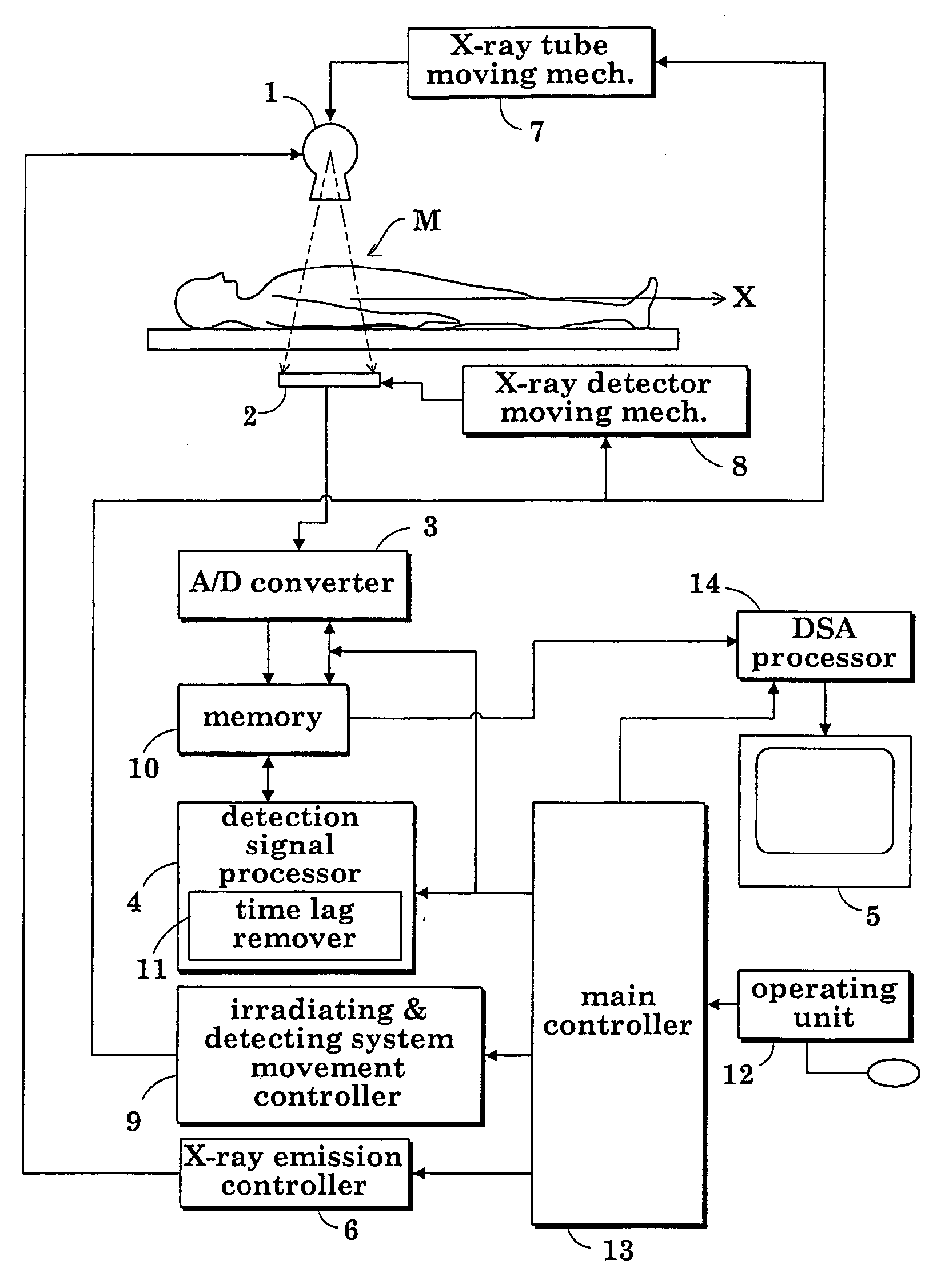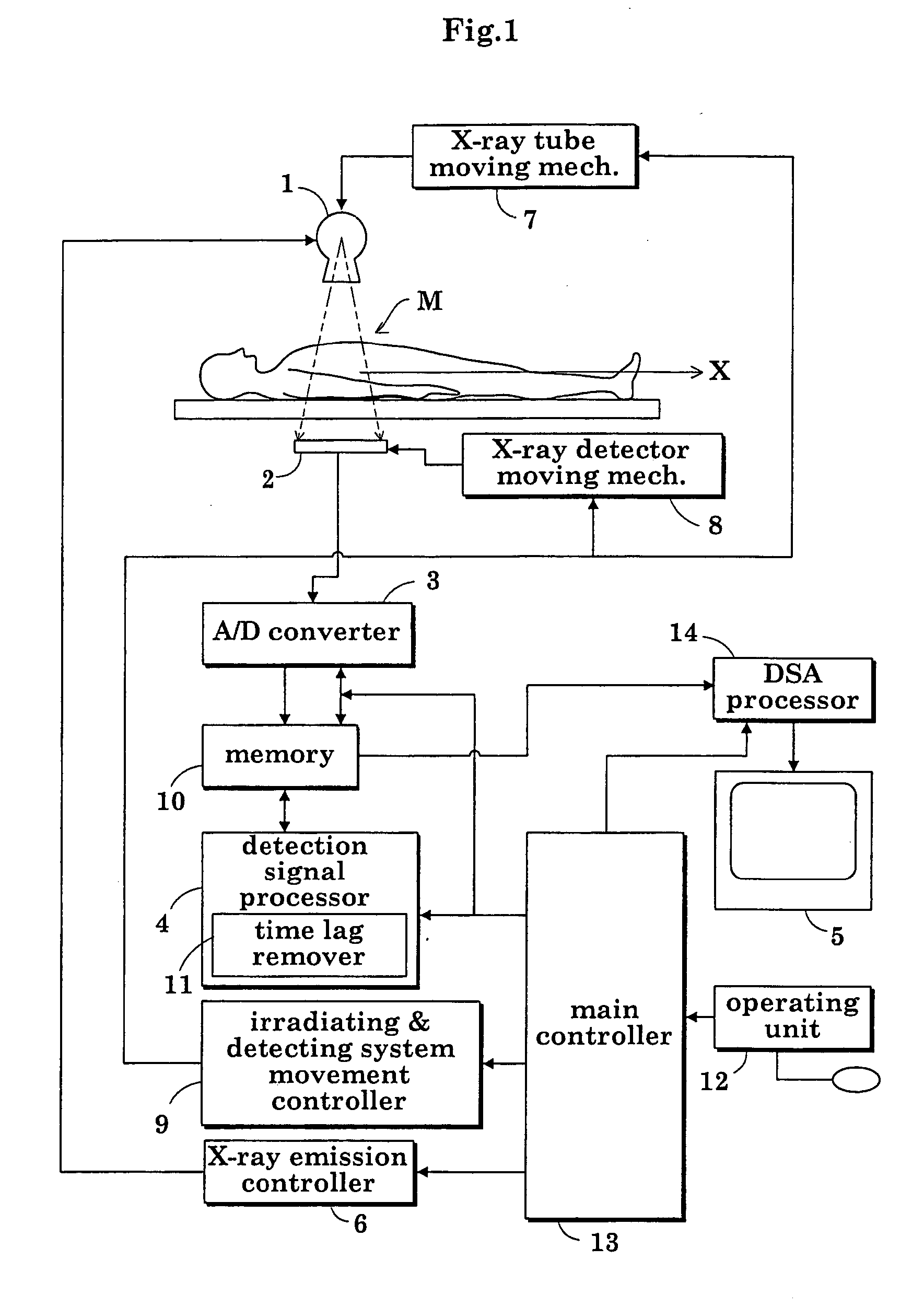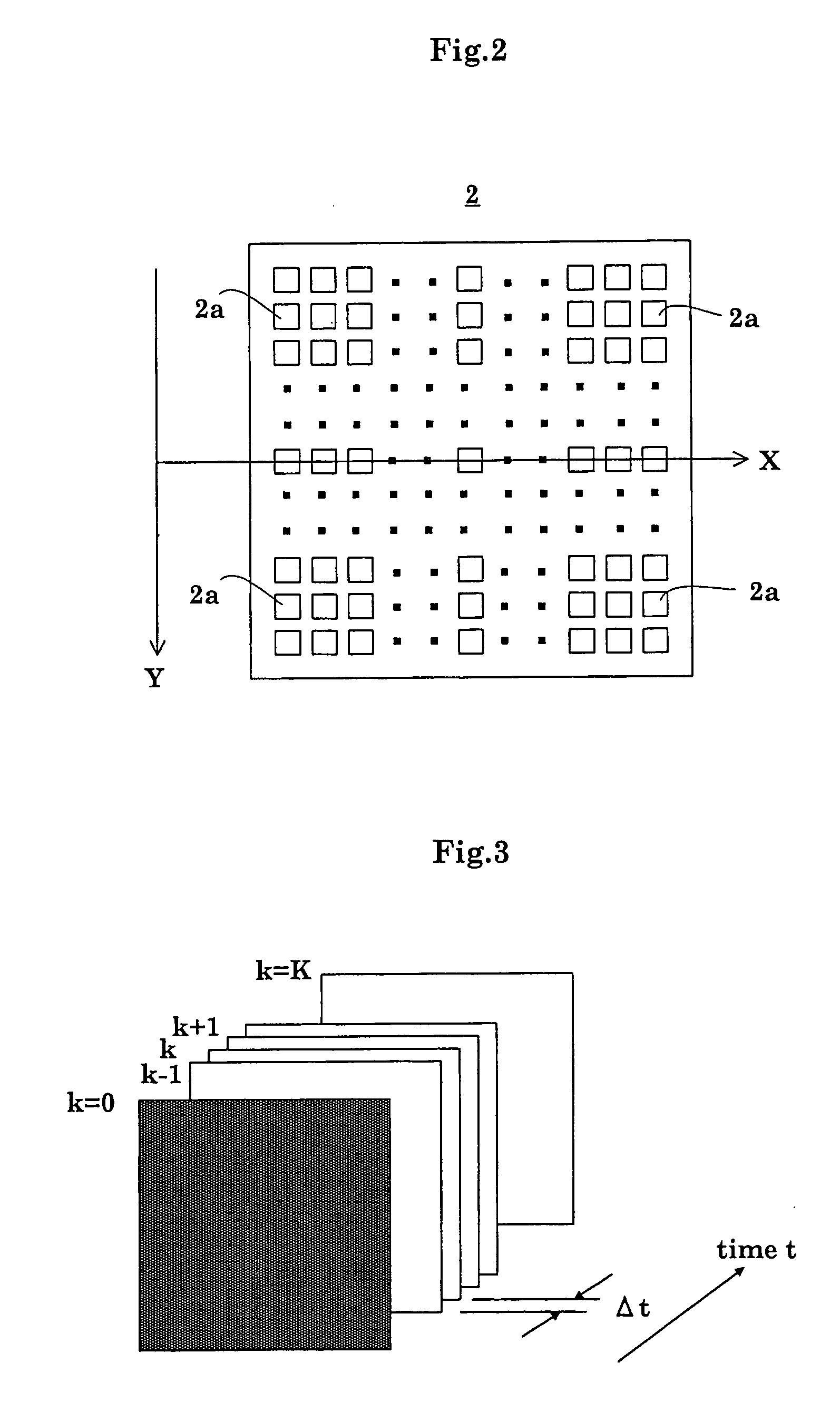Radiographic apparatus and radiation detection signal processing method
a radiation detection and signal processing technology, applied in the field of radiographic equipment, can solve the problems of time delay of fpd and after-image problems, and achieve the effect of reducing time lags and high accuracy
- Summary
- Abstract
- Description
- Claims
- Application Information
AI Technical Summary
Benefits of technology
Problems solved by technology
Method used
Image
Examples
Embodiment Construction
Preferred embodiments of this invention will be described in detail hereinafter with reference to the drawings.
FIG. 1 is a block diagram showing an overall construction of a fluoroscopic apparatus according to this invention.
As shown in FIG. 1, the fluoroscopic apparatus includes an X-ray tube (radiation emitting device) 1 for emitting X rays toward a patient M, an FPD 2 (radiation detecting device) for detecting X rays transmitted through the patient M, an analog-to-digital converter 3 (signal sampling device) for digitizing X-ray detection signals (radiation detection signals) taken from the FPD (flat panel X-ray detector) 2 at predetermined sampling time intervals Δt, a detection signal processor 4 for creating X-ray images based on X-ray detection signals outputted from the analog-to-digital converter 3, and an image monitor 5 for displaying the X-ray images created by the detection signal processor 4. That is, the apparatus is constructed to acquire X-ray images from the X-...
PUM
 Login to View More
Login to View More Abstract
Description
Claims
Application Information
 Login to View More
Login to View More - R&D
- Intellectual Property
- Life Sciences
- Materials
- Tech Scout
- Unparalleled Data Quality
- Higher Quality Content
- 60% Fewer Hallucinations
Browse by: Latest US Patents, China's latest patents, Technical Efficacy Thesaurus, Application Domain, Technology Topic, Popular Technical Reports.
© 2025 PatSnap. All rights reserved.Legal|Privacy policy|Modern Slavery Act Transparency Statement|Sitemap|About US| Contact US: help@patsnap.com



